29 Delicious Asian Savory Pastries for Your Taste Buds
Asian savory pastries represent a culinary adventure that tantalizes taste buds with complex flavors and remarkable textures.
Skilled bakers transform simple ingredients into extraordinary handheld delights that showcase regional culinary traditions.
Regional techniques and generations-old recipes breathe life into these compact culinary masterpieces.
Cultural influences merge seamlessly within each carefully crafted pastry, reflecting centuries of gastronomic innovation.
Intricate preparation methods transform humble ingredients into sophisticated culinary experiences that surprise and delight.
Delicate yet robust, these pastries tell stories of community, family, and shared meals through their nuanced compositions.
Incredible combinations of spices, fillings, and techniques elevate these portable treats beyond mere snacks.
Prepare to uncover 29 great Asian savory pastries that will transform your understanding of global cuisine:
Great Asian Savory Pastries for Snack Lovers
Asian savory pastries promise crisp, golden exteriors and flavorful fillings. Found in bustling markets and bakeries, these snacks are favorites for sharing or solo indulgence.
Karipap
Karipap are savory pastry pockets stuffed with spicy filling that originated in Malaysia's multicultural culinary landscape.
Malaysian street vendors and home kitchens perfected these deep-fried or baked hand-held snacks with crispy outer shells and rich inner curry mixtures.
Traditional versions feature chicken and potato curry, though modern variations include tuna, sardines, and beef rendang fillings.
Southeast Asian communities widely embrace karipap as a popular breakfast and afternoon snack option.
Regional adaptations spread quickly across Malaysia, Singapore, and Thailand due to their simple preparation and intense flavors.
Convenient size and affordable ingredients make these pastries a staple in markets, street stalls, and home kitchens.
Small triangular or semicircular shapes allow easy handling and portable eating.
Spices and fillings reflect Malaysia's diverse cultural influences, creating a unique culinary experience in every bite.
Pacanga Boregi
Pacanga boregi stands as a crispy Turkish pastry stuffed with spiced pastirma and melted kasar cheese, representing a beloved Sephardic Jewish culinary tradition from Istanbul and Anatolia.
Rectangular sheets of yufka or phyllo dough wrap around savory dried beef and cheese, creating a rich filling that captures regional flavors.
Peppers and tomatoes often enhance the mixture, adding depth to the classic recipe.
Chefs traditionally fry the rolled pastries until golden and crisp, though baking remains an alternative preparation method.
Street vendors and home cooks carefully craft each borek to ensure a perfect balance of textures and tastes.
Istanbul restaurants and local kitchens frequently serve these appetizers hot and fresh, making them a popular street food and social gathering snack.
Sephardic Jewish communities have long celebrated this dish as a symbol of their culinary heritage.
Western travelers often discover pacanga boregi as a surprising and delicious introduction to Turkish cuisine.
Cig Borek
Cig borek stands as a crispy deep-fried pastry beloved by Turkish Tatars, featuring a golden-brown semicircle packed with seasoned ground meat and onions.
Handcrafted dough blends water, sugar, flour, oil, and salt into a delicate wrapper embracing its savory filling.
Spices and occasional cheese enhance the meat mixture's rich flavor profile.
Skilled home cooks carefully fold the ingredients into a half-moon shape before submerging it in hot oil.
Each piece transforms into a crunchy exterior with a juicy interior during frying.
Authentic preparation demands precise techniques passed through generations.
Traditional serving includes cooling the pastry alongside refreshing ayran or yogurt.
Diners enjoy this street food as a satisfying snack or quick meal throughout Turkiye.
Kol Boregi
Kol boregi is a spiral-shaped Turkish pastry crafted from flaky puff dough and rolled into an elegant arm-like form.
Turkish bakeries and home kitchens create this savory treat by filling the pastry with diverse ingredients like seasoned ground meat, cheese, spinach, or potatoes mixed with pine nuts and currants.
Regional variations showcase different flavor combinations depending on local preferences and ingredient availability.
Bakers carefully roll the pastry into a distinctive long shape resembling an arm, which explains its descriptive name.
Low-temperature baking ensures a crispy exterior and soft interior with golden-brown coloration.
Pine nuts and currants add complexity to meat-based fillings, creating rich flavor profiles.
Small slices are typically served as appetizers or light meals throughout Turkey.
Family gatherings and social events often feature this traditional pastry as a beloved comfort food.
Bosnak Boregi
Bosnak boregi embodies Turkish pastry mastery, featuring delicately thin dough rolled and stuffed with savory spinach and cheese fillings.
Originating from Bosnian culinary traditions, this borek variant combines rich ingredients like potatoes and ground meat within its crispy layers.
Locals craft this dish with precision, carefully rolling thin pastry sheets and creating multiple delectable layers.
Baking transforms the borek into a golden-brown delicacy with a crisp exterior and soft interior.
Regional variations showcase different filling combinations, reflecting local ingredient preferences.
Restaurants and home kitchens across Turkey and Bosnia prepare this beloved pastry with traditional techniques.
Serving bosnak boregi alongside cool yogurt enhances its complex flavor profile.
You can enjoy this hearty borek as a satisfying breakfast, lunch, or dinner option.
Tepsi Boregi
Tepsi boregi is a flavorful Turkish pastry featuring layered phyllo dough filled with seasoned meat, vegetables, or cheese, carefully assembled with buttered sheets and baked until golden brown.
Originating in Turkey, this savory dish combines crispy pastry with rich, satisfying ingredients like ground beef or lamb, onions, potatoes, or spinach.
Cooks brush each phyllo layer with melted butter or oil, creating a luxurious texture and depth of flavor.
Egg wash or yogurt provides a glossy, appetizing finish to the pastry surface.
Traditional preparation involves baking in an oven or carefully cooking on a stovetop, ensuring even browning and a crisp exterior.
Families often enjoy tepsi boregi as a hearty breakfast, lunch, or dinner option.
Regional variations exist across Turkey, with each area adding its unique twist to the classic recipe.
Versatile and filling, tepsi boregi represents a beloved staple in Turkish cuisine that continues to delight generations.
Su Boregi
Su boregi stands as a pinnacle of Turkish pastry craftsmanship, challenging even experienced bakers with its intricate preparation method.
Delicate dough sheets require precise soaking in a special liquid mixture of water, olive oil, milk, and eggs before baking, which creates an exceptionally tender texture.
Traditional fillings typically include crumbled white cheese and fresh parsley, providing a classic flavor profile.
Skilled bakers must carefully layer and moisten each thin pastry sheet to achieve its signature soft, moist consistency.
Restaurants and bakeries across Turkey commonly serve this beloved dish as a popular breakfast or snack option.
Regional variations might include slight differences in cheese types or additional herbs.
Su boregi represents a true test of culinary skill and patience in Turkish cuisine.
Turkish families often consider this borek a special treat reserved for gatherings and celebrations.
Sigara Boregi
Sigara boregi are crispy Turkish pastry rolls filled with a creamy cheese and parsley mixture, deep-fried to golden perfection.
Small cylindrical treats popular across Turkey, these appetizers feature thin yufka or phyllo dough wrapped into cigar-like shapes.
Street vendors and home kitchens prepare the snacks by spreading soft cheese blended with fresh parsley on triangular dough pieces.
Carefully rolled and sealed, the pastries transform into crunchy exterior shells with smooth, savory interiors when fried.
Each bite delivers a satisfying crunch followed by rich cheese flavors.
Regional variations include different cheese types and occasional egg additions.
Traditional preparation methods pass through generations of Turkish families.
Street food markets frequently showcase these beloved quick bites as popular appetizer options.
Samsa
Samsa are savory pastry pockets originating in Central Asia that showcase a crispy golden exterior filled with spiced meat.
Uzbekistan, Kazakhstan, Kyrgyzstan, and Tajikistan consider these triangular or half-moon shaped pastries a national culinary treasure.
Wheat flour, water, and occasional oil form the thin, sturdy dough that wraps around seasoned meat mixtures.
Lamb or beef mince combined with finely chopped onions creates the primary filling, enhanced by traditional spices like cumin and black pepper.
Bakers carefully fold the dough around the seasoned meat mixture before baking the pastries to a perfect golden brown.
Regional variations might include different meat selections or subtle spice adjustments.
Each samsa represents a compact meal that reflects Central Asian culinary traditions.
Regional bakers often prepare these pastries using traditional clay tandoor ovens for authentic flavor and texture.
Gul Boregi
Gul boregi represents a delicate Turkish pastry shaped like a rose or spiral, crafted from thin yufka or phyllo dough rolled into an elegant coil.
Traditional fillings include spinach, white cheese, potatoes, or ground meat that perfectly complement the flaky layers.
Bakers carefully assemble each pastry by spreading selected ingredients across the dough before rolling it into a distinctive rose-like shape.
Sesame or nigella seeds often garnish the surface, adding extra texture and flavor before baking.
Baked until golden brown, gul boregi emerges crisp and inviting from the oven.
Warm serving temperature enhances its taste and texture, making it an ideal companion to Turkish tea or yogurt.
Home cooks and bakeries across Turkey prepare this beloved pastry as a popular breakfast or snack option.
Small yet satisfying, gul boregi offers a compact and flavorful bite of traditional Turkish cuisine.
Acma
Acma represents Turkish street pastries with signature pillowy layers and twisted bagel-like shapes crafted from simple ingredients like flour, yogurt, milk, eggs, butter, and olive oil.
Turkish bakers carefully prepare this versatile bread by mixing soft dough and kneading it into delicate circular forms.
Regional variations emerge between sweet and savory versions, each reflecting local culinary traditions.
Home kitchens and bakeries across Turkey frequently serve these pastries as morning breakfast treats or light snacks.
Street vendors often sell warm acma to hungry pedestrians seeking quick, satisfying bites.
Soft internal textures contrast with slightly crisp external surfaces, creating complex sensory experiences.
Traditional preparation methods pass through generations, maintaining authentic techniques.
Neighborhood bakeries take special pride in perfecting their unique acma recipes.
Bungeoppang
Bungeoppang are iconic South Korean fish-shaped pastries packed with rich red bean filling and crispy golden edges.
Street vendors and bakeries across Korea craft these sweet treats using simple batter ingredients like eggs, flour, sugar, and water.
Fish-shaped molds create the distinctive pastry shape while holding smooth or coarse red bean paste inside.
Traditional versions differ from Japanese taiyaki by focusing exclusively on red bean filling without alternative variations.
Factory-produced ice bungeoppang offer a modern twist by incorporating ice cream within the classic fish-shaped design.
Korean street food culture embraces these affordable, portable snacks as quick comfort meals.
Winter markets and street corners often feature steaming bungeoppang stations where fresh pastries tempt passersby.
Curry Beef Triangle (Ga Li Su)
Curry beef triangle represents a popular Hong Kong street food pastry packed with savory flavors and crispy textures.
Skilled bakers create these triangular pastries by shaping soft dough into circular discs filled with spiced ground beef, diced onions, minced garlic, curry powder, and green peas.
Chefs carefully fold the filled dough into a distinctive triangular shape, sealing edges with beaten eggs to ensure a tight closure.
Deep-frying transforms the pastry in hot oil, creating a golden-brown exterior with a satisfying crunch.
Hungry locals and tourists grab these portable snacks from street vendors and bakeries throughout Hong Kong.
Street food culture celebrates these handheld treats as quick, affordable meals perfect for busy urban lifestyles.
Authentic recipes often include subtle variations in spice levels and meat preparations.
Curry beef triangles showcase Hong Kong's multicultural culinary influences through their unique blend of British pastry techniques and Asian flavor profiles.
Panada
Panada are Indonesian deep-fried, crescent-shaped pastries inspired by Spanish empanadas with Portuguese culinary influences.
Portuguese traders introduced similar pastry techniques to Indonesia during 16th-century maritime expeditions.
Indonesian bakers transformed the original concept by using local skipjack tuna, onions, coconut milk, and chili peppers as signature fillings.
Leavened dough creates a crispy exterior that perfectly encases the savory seafood mixture.
Each panada combines maritime trading history with regional Indonesian ingredients.
Bakeries and street vendors across Indonesia prepare these compact snacks using traditional methods.
Small handheld pastries serve as convenient meals for workers and travelers.
Regional variations showcase unique spice combinations and local seafood preferences.
Beef Bun (Niu Rou Bao)
Beef buns showcase Hong Kong's savory street food culture with a perfectly balanced meat-filled pastry that combines soft bread dough and seasoned ground beef.
These portable snacks feature a pillowy exterior encasing spiced beef mixed with onions or curry powder.
Bakers craft dough using flour, sugar, water, milk, yeast, and cream to create a tender wrapper.
Skilled home cooks and bakery professionals shape the mixture into neat rolls before baking until golden brown.
Street vendors and small bakeries across Hong Kong sell these compact meals as quick lunch or snack options.
Traditional recipes often include subtle curry spices that enhance the beef's rich flavor.
Meat-filled pastries like beef buns reflect Hong Kong's culinary creativity and love for portable, flavorful dishes.
Khuushuur
Khuushuur are crispy Mongolian pastries packed with juicy ground mutton, onions, and occasional garlic or peppers, deep-fried to golden perfection.
Nomadic herders first created these crescent-shaped handheld treats as portable meals during long journeys across Mongolia's rugged landscapes.
Mongolian families traditionally prepare khuushuur during special celebrations and gatherings, using fresh meat from local herds.
Cooks carefully seal the pastry edges to prevent filling from leaking during frying.
Mutton provides rich, robust flavor that defines the dish's authentic taste.
Regional variations might include beef or additional vegetables.
Hot khuushuur emerge crispy outside and steaming inside, making them irresistible street food.
Served immediately, these pastries represent Mongolia's practical and delicious culinary heritage.
Boyoz
Boyoz is a flaky, layered pastry pioneering Izmir's culinary heritage with deep Sephardic Jewish roots from Spain.
Artisan bakers craft this delicate treat using simple ingredients like flour, sunflower oil, and tahini.
Spanish immigrants introduced the pastry in the late 15th century, preserving its traditional preparation methods.
Izmir remains the exclusive birthplace of authentic boyoz, where local bakeries carefully maintain generations-old techniques.
Street vendors and small shops sell these savory pastries fresh each morning.
Residents often enjoy boyoz as a quick breakfast or light snack.
Tahini gives the pastry a distinctive rich, nutty flavor.
Mooncake (Yuebing)
Mooncakes represent an iconic Chinese pastry steeped in cultural significance and lunar symbolism during annual Mid-Autumn Festival celebrations.
Traditional mooncakes feature a dense, shortcrust pastry base called yueh ping filled with rich ingredients like black sesame, lotus seed paste, red beans, and salted duck egg yolks.
Modern variations showcase creative fillings ranging from sweet honeydew and chocolate to savory options like abalone and green tea.
Chinese philosophy connects their round shape to concepts of unity, perfection, and completeness—mirroring the moon's circular form.
Families and friends share these intricate pastries, cutting them into small wedges and enjoying them alongside fragrant Chinese tea.
Ancient traditions originally presented mooncakes as ritual offerings to lunar deities.
Contemporary celebrations continue embracing these symbolic treats as central to festive gatherings.
Sambusa Baraki
Sambusa baraki is a substantial Tajik meat pastry crafted with a distinctive triangular shape and flaky dough layered with rich, spiced meat.
Traditional preparation involves creating a firm dough mixture using flour, eggs, salt, and water, carefully greased with melted butter.
Mutton or beef forms the primary filling, enhanced with tail fat, onions, cumin seeds, and aromatic spices.
Skilled bakers assemble the pastry by spreading the seasoned meat across a dough disc, folding it into a triangular form.
Beaten egg yolks give the pastry a golden sheen, while sesame seeds add texture and visual appeal.
Tajik bakers typically bake sambusa baraki in an atandyr, a traditional clay oven that imparts a unique, smoky flavor.
Regional variations might include slight adjustments to spice blends or meat selections.
Sambusa baraki serves as a hearty meal often enjoyed during celebrations or as a satisfying lunch option.
Majamir
Majamir are delicate Syrian pastry nests originating from Yabroud that showcase a unique culinary craftsmanship through their intricate shape and savory filling.
These hand-crafted pastries feature thin dough carefully rolled and shaped into circular nests with raised edges.
Minced meat blends with fresh tomatoes, onions, and eggs create a rich interior that fills each pastry pocket.
Flour, water, oil, and salt form the basic dough ingredients transformed into small delicate balls.
Local cooks meticulously shape each pastry by hand, ensuring uniform size and precise nest-like structure.
Syrian families traditionally prepare majamir during special gatherings as a communal meal.
Regional variations might include different meat seasonings or additional spices.
Mountain communities in Syria particularly cherish this traditional dish as a symbol of their culinary heritage.
Pie Tee
Pie tee embodies Peranakan cuisine's artful miniature street food with crispy top-hat shaped pastry shells expertly crafted through deep-frying batter-coated molds.
Originating in Singapore and Malaysia, these delicate bite-sized appetizers showcase a complex blend of Chinese and Malay culinary influences.
Thin pastry shells cradle a savory mixture of julienned vegetables like bamboo shoots, turnips, and carrots.
Shrimp and omelet strips often garnish the top, adding protein and texture to the snack.
Chili sauce and fresh coriander leaves provide a bright, spicy finish to each delicate morsel.
Peranakan families traditionally prepare pie tee during festive gatherings and special occasions.
Home cooks pass down generations-old techniques for creating perfect crispy shells.
Krathong Thong
Krathong thong are golden Thai crispy pastry cups that showcase Bangkok's elegant street food culture through delicate shells carefully crafted with rice and plain flour.
Skilled artisans use specialized long-handled molds to create thin, perfectly shaped cups with crisp edges and smooth surfaces.
Fillings typically include sweet and savory mixtures of minced chicken, shrimp, corn, or vegetables seasoned with traditional Thai spices.
Royal Thai cuisine popularized these bite-sized appetizers as elegant party snacks served during special celebrations.
Restaurants and street vendors prepare these cups by carefully frying thin batter until golden brown and crispy.
Each cup holds a small portion of flavorful ingredients that balance textures and tastes.
Street food markets and high-end restaurants across Thailand feature these miniature pastry shells as popular appetizers.
Krathong thong represents a perfect blend of culinary craftsmanship and regional flavor profiles.
Pate Chaud
Pate chaud are Vietnamese-French fusion pastries featuring buttery, golden puff pastry shells packed with richly seasoned ground pork and aromatic spices.
French colonial influence shaped these handheld meat pies during Vietnam's culinary transformation in the late 19th century.
Onions, black pepper, and sometimes carrots enhance the savory filling's complex flavor profile.
Street vendors and bakeries across Vietnam sell these portable snacks as quick breakfast or afternoon treats.
Crispy exterior layers contrast with the warm, juicy meat interior, creating a satisfying textural experience.
Home cooks and professional bakers craft these pastries using traditional techniques passed through generations.
Regional variations include different meat options like chicken or beef.
Small bakeries in Ho Chi Minh City and Hanoi continue perfecting this beloved cross-cultural pastry.
Tuna Bun (Tun Na Yu Bao)
Tuna buns are beloved Hong Kong street pastries featuring savory canned tuna mixed with mayonnaise and eggs, nestled inside soft, slightly sweet bread rolls.
Bakeries across Hong Kong craft these portable snacks with a simple dough composed of flour, sugar, water, yeast, and milk.
Bakers carefully shape the rolls by filling soft dough with tuna mixture and baking until golden brown.
Street vendors and home kitchens alike prepare these compact treats as quick breakfast or lunch options.
Students and workers frequently enjoy tuna buns as convenient handheld meals.
Traditional recipes often include a creamy egg and mayonnaise blend with canned tuna for added richness.
Regional variations might incorporate different seasonings or additional ingredients.
Hong Kong's culinary culture has embraced these simple yet satisfying pastries as a staple street food option.
Ham And Egg Bun (Huo Tui Ji Dan Boo)
Ham and egg bun represents a classic Hong Kong street breakfast sandwich combining soft pastry with savory fillings.
Western-influenced bread rolls get wrapped around thin ham slices and fluffy scrambled or fried eggs.
Bakeries across Hong Kong craft these portable morning meals with precise dough techniques using flour, sugar, eggs, milk, yeast, salt, and cream.
Street vendors and small bakery shops sell these compact breakfast items as quick morning fuel for busy commuters.
Traditional preparation involves carefully rolling thin ham and freshly cooked eggs inside slightly sweet, pillowy bread dough.
Bakers bake the rolls until golden brown with a slightly crispy exterior and soft inner texture.
Hong Kong residents enjoy these handheld meals as convenient breakfast options during morning rush hours.
Culinary traditions blend Western sandwich concepts with traditional Chinese baking methods in this popular street food.
Gulha
Gulha are crispy Maldivian pastry balls brimming with smoky tuna, shredded coconut, and diced onions that represent island culinary traditions.
Small deep-fried dough pockets burst with savory flavors unique to Maldivian cuisine.
Locals prepare these snacks using traditional methods passed through generations.
Fish filling typically includes dried tuna called mas, lending a distinctive smoky taste.
Street vendors and small cafes called hotaa frequently sell these compact treats.
Coconut provides natural sweetness and texture to the pastry's interior.
Skillful preparation involves carefully mixing ingredients and sealing delicate dough parcels.
Gulha serve as popular street food across Maldivian islands, offering quick and satisfying bites for residents and visitors.
Suzhou Mooncake (Sushi Yuebing)
Suzhou mooncakes represent a delicate pastry tradition originating from eastern China's Jiangsu province, distinguished by their uniquely flaky, multi-layered thin crust that crumbles softly with each bite.
Craftsmen carefully prepare these mooncakes using specialized techniques that create intricate layers of dough resembling delicate paper-thin sheets.
Traditional fillings often include savory meat combinations like pork or crab, contrasting with sweeter versions found in other Chinese regions.
Seasonal celebrations like mid-autumn festival showcase these regional delicacies, where families exchange and enjoy these carefully crafted treats.
Salt-cured meats and local spices frequently complement the complex pastry exterior, adding depth to each morsel.
Wheat flour and lard form fundamental ingredients for achieving the signature crispy texture.
Yunnan Ham Mooncake (Yuntui Yuebing)
Yunnan ham mooncake embodies a savory culinary masterpiece that blends traditional festival pastry with the region's signature cured meat.
Yunnan ham brings an intense umami flavor profile to this unique mooncake variation, elevating the classic dessert into a sophisticated snack.
Chinese bakers craft these mooncakes with a tender, slightly flaky pastry crust that carefully envelops the rich ham filling.
Regional ingredients distinguish this version from sweeter mooncake styles, offering a meaty alternative to conventional sweet versions.
Sophisticated palates appreciate the complex flavor balance between the salty ham and delicate pastry.
Festival traditions inspire this innovative approach to a beloved Chinese celebration treat.
Ham production in Yunnan province dates back centuries, contributing deep cultural significance to the ingredient.
Mooncake preparation requires skilled technique to ensure perfect texture and flavor integration.
Kulcha Shor
Kulcha shor are savory Afghan pastries bursting with rich cultural heritage and unique flavor profiles.
Craftsmen prepare these special snacks using a delicate blend of flour, salt, margarine, eggs, milk, and distinctive nigella seeds.
Small dough balls are carefully shaped with knife-carved edges to create nest-like structures.
Soft centers mark each pastry's signature design.
Afghans traditionally serve these treats during Eid celebrations as festive street food.
Families gather to enjoy these handmade snacks that showcase generations of culinary tradition.
Margarine and eggs help create a tender, crumbly texture.
Nigella seeds provide an aromatic, slightly peppery undertone that distinguishes these pastries from other regional breads.
What Ingredients Are Commonly Used in Asian Savory Pastries?
Asian savory pastries are a delightful blend of diverse fillings and flaky or doughy exteriors, showcasing regional flavors and textures. Common ingredients include:
How Are Asian Savory Pastries Typically Served?
Asian savory pastries are enjoyed in many ways, often reflecting the unique dining customs of their regions:

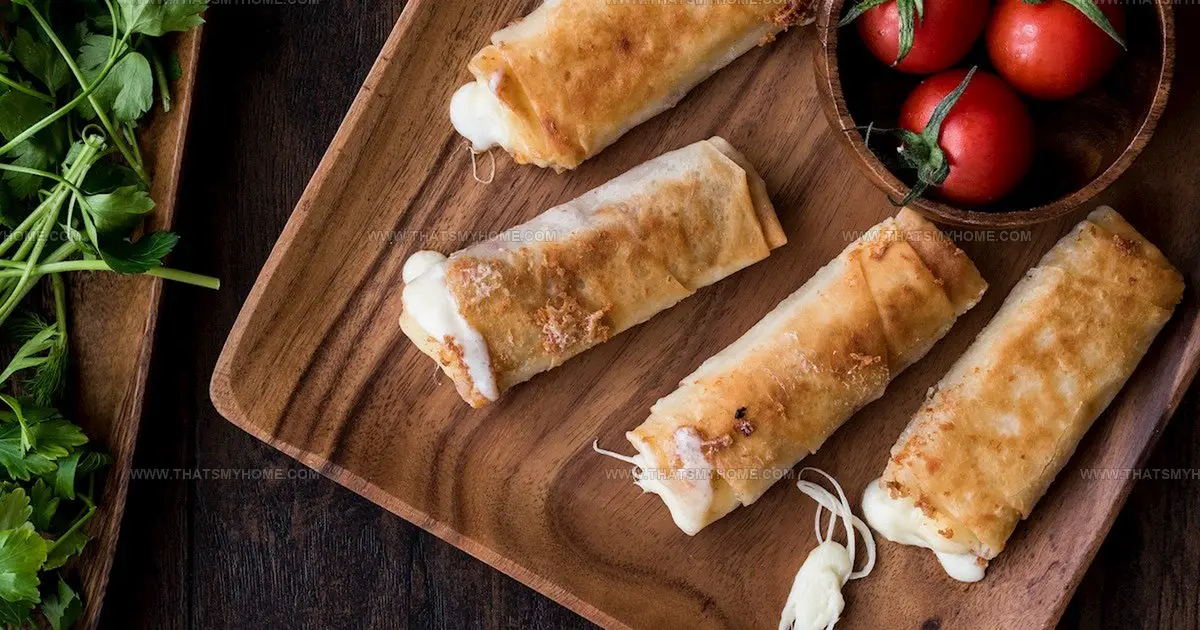
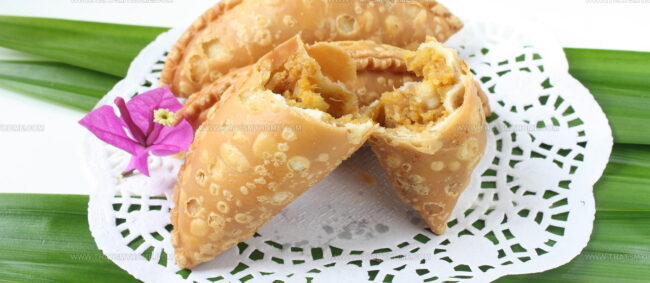
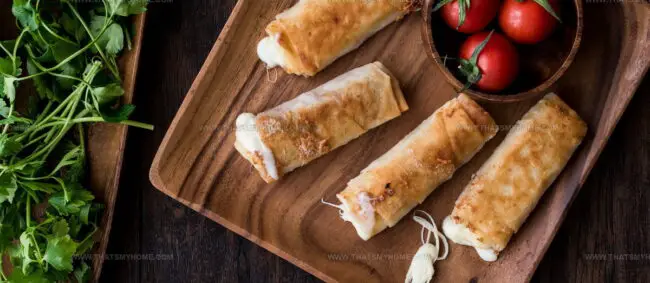
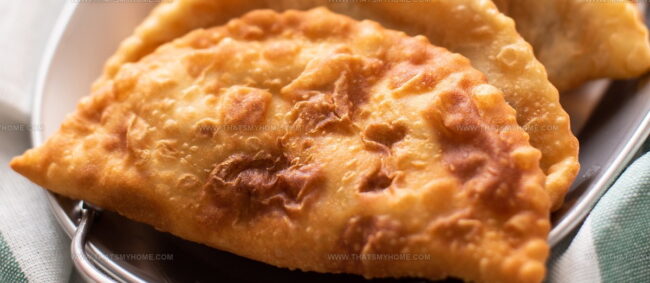
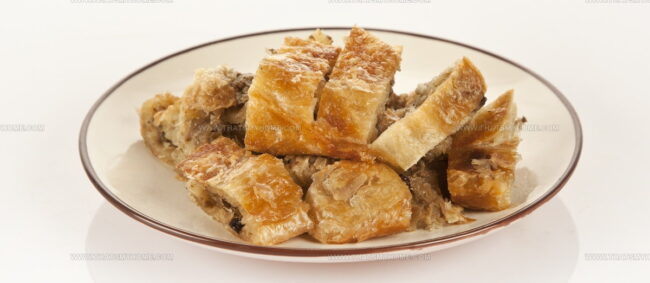
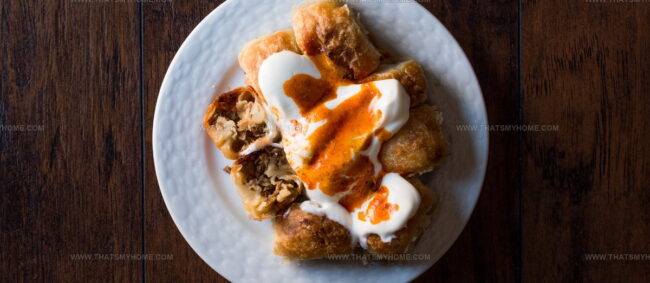
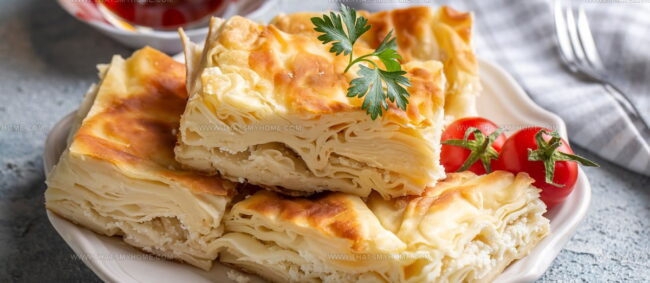
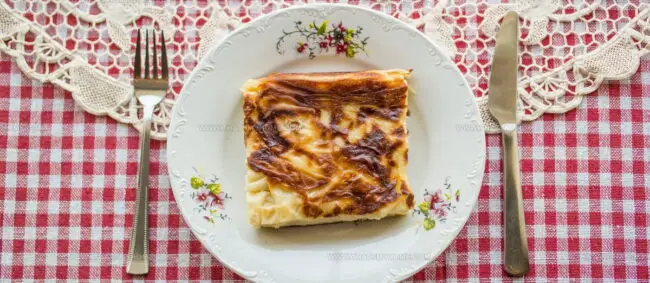
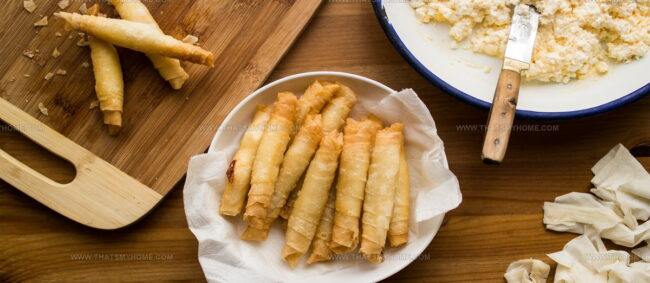
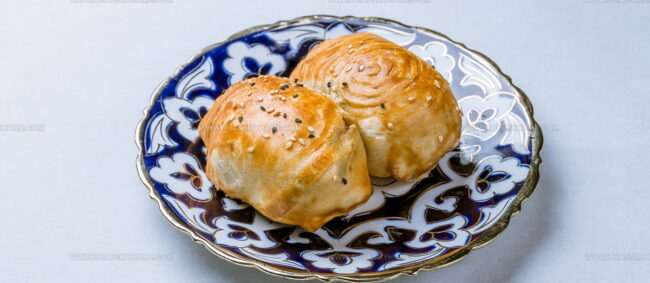
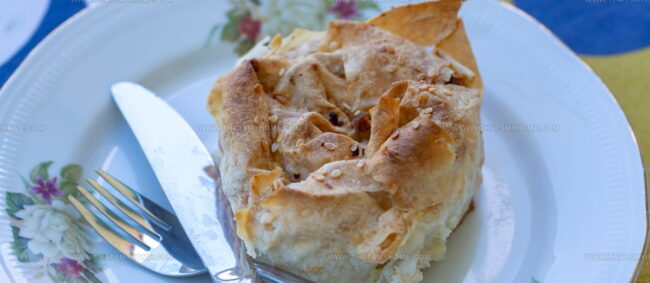
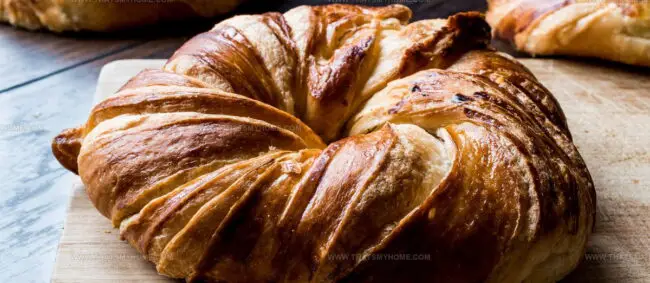
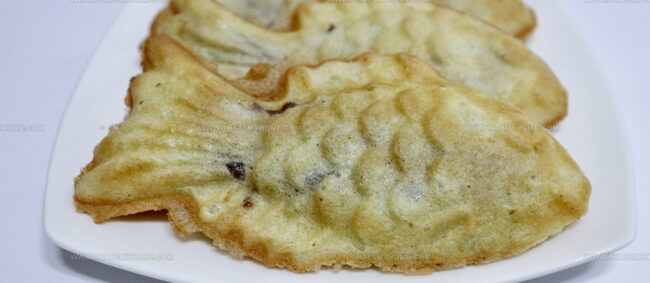
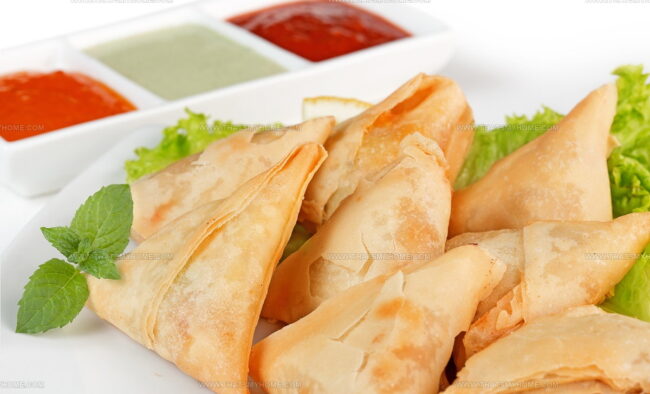
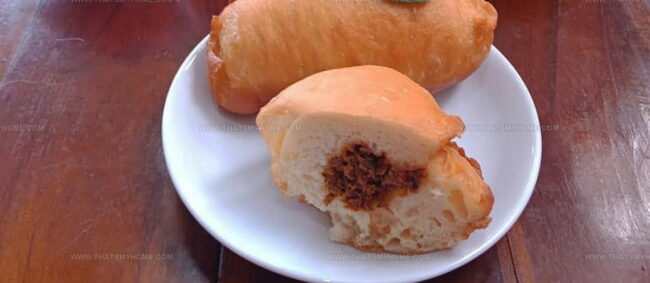
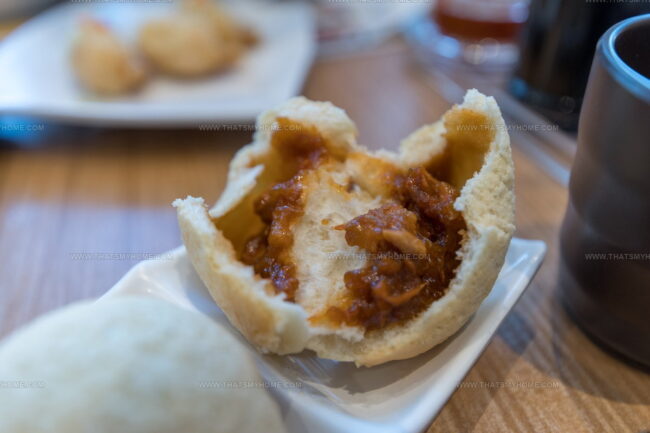
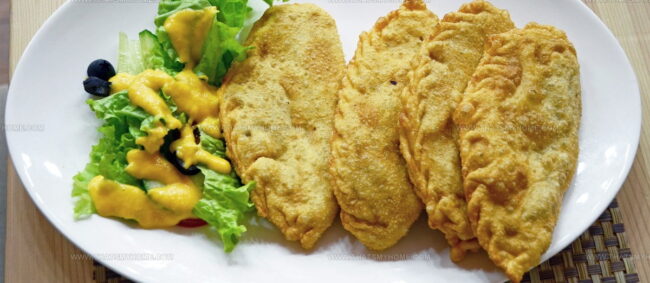
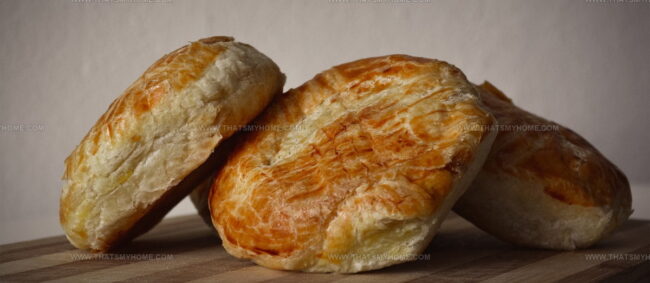
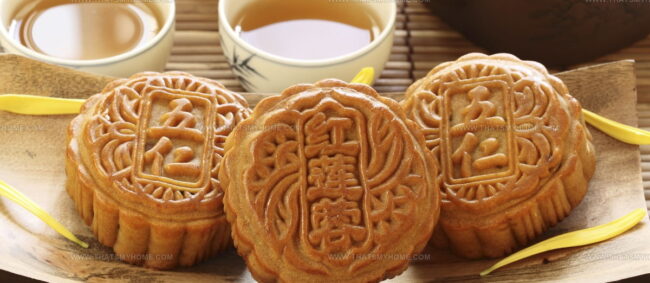
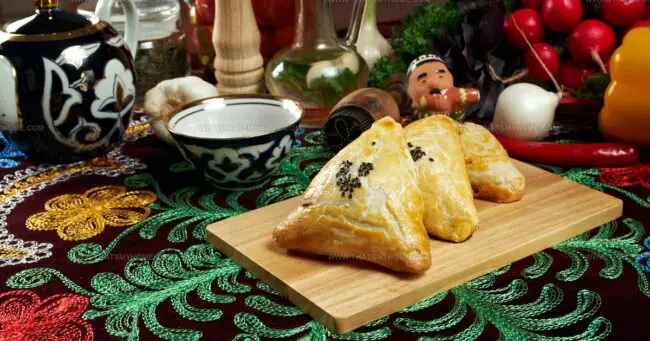
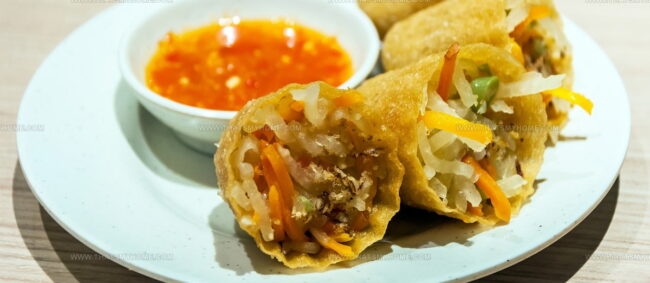
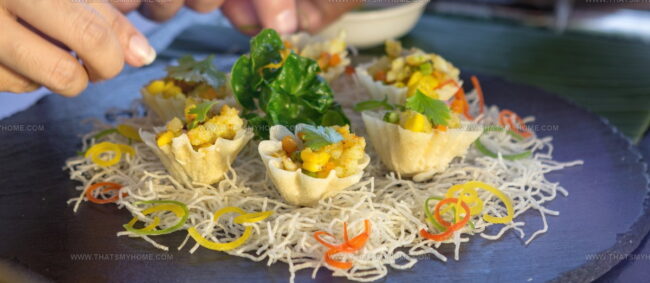
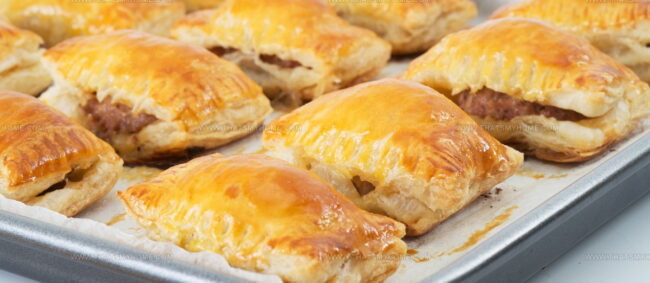
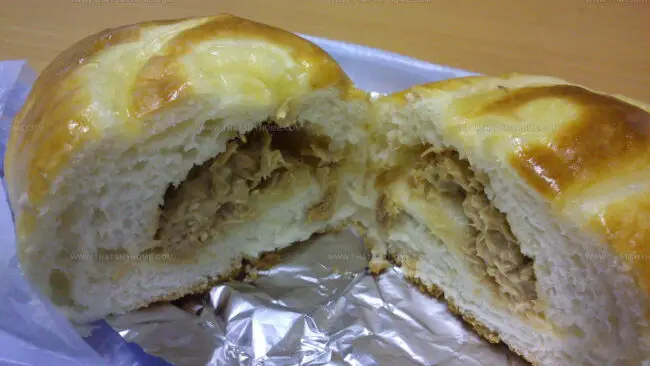
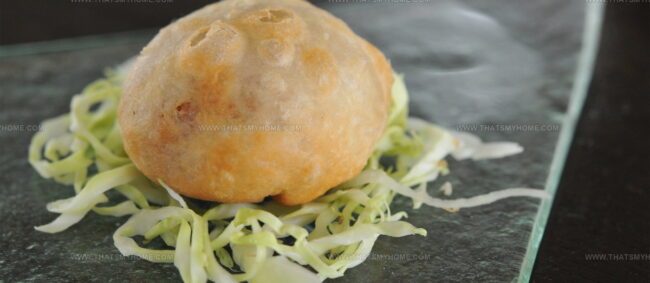
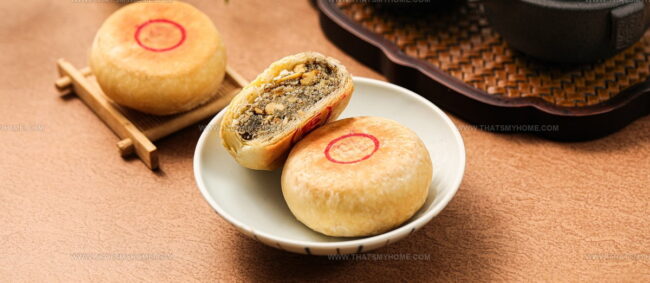
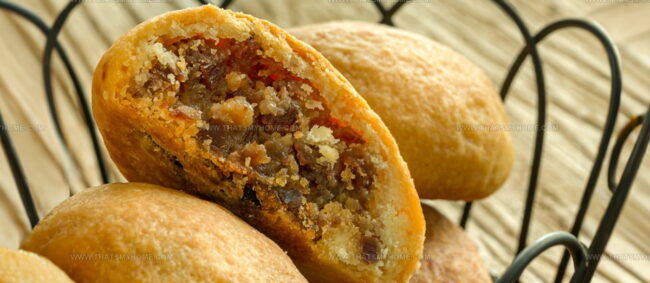
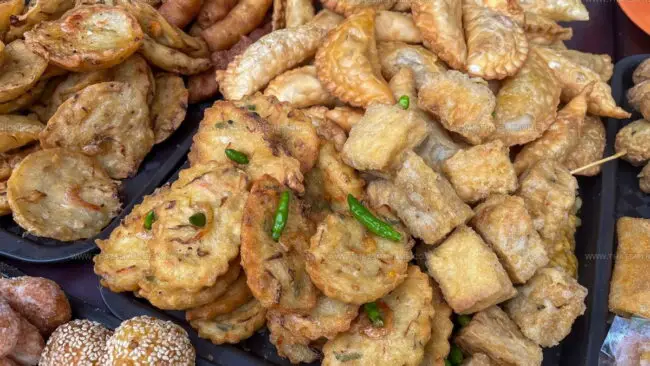
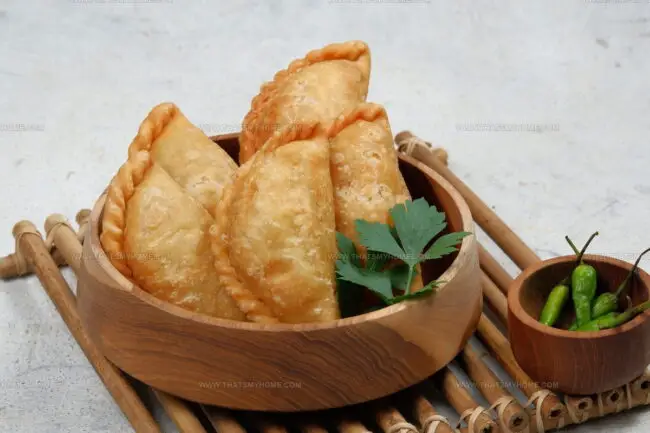
Mary Ellen
Founder, Pastry Chef & Recipe Developer
Expertise
Education
Savannah Technical College
Mary Ellen is the heart and soul of thatsmyhome.com. As the founder, pastry chef, and recipe developer, she refined her skills at Savannah Technical College with an Associate of Applied Science in Culinary Baking & Pastry Arts.
Mary blends classic techniques with modern twists to make artisanal breads, beautifully crafted pastries, and desserts full of unique flavor. Her passion is evident in every recipe, and she enjoys sharing her expertise through hands-on pastry workshops and insightful articles in local culinary magazines.